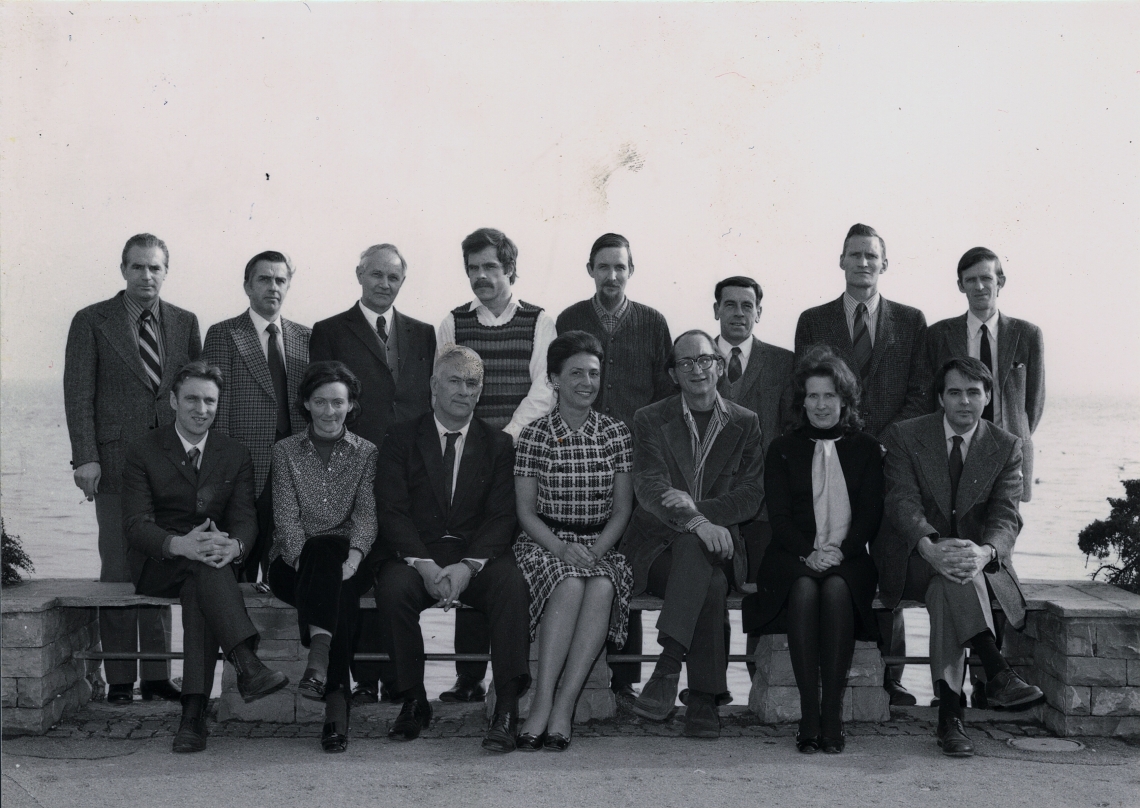Landmark dates in the early history of bear conservation and origins of the Bear Specialist Group.
1968:
Establishment of the Polar Bear Specialist Group: this stemmed from an initial meeting of polar bear biologists in 1965, whereupon it was decided that the IUCN would act as the coordinating agency for international exchange of information.
First informal gathering/workshop on brown/grizzly bears and American black bears (considered the first conference on bear research and management).
1970:
Second International Conference on Bear Research and Management, organized by Steve Herrero, and held at the University of Calgary. IUCN published the proceedings in 1972. The proceedings included a seminal paper on “The status and conservation of bears (Ursidae) of the world –– 1970”, the first review of the conservation status of the world’s 8 bear species, by Ian McTaggart Cowan.
1973:
An historic “Agreement on the Conservation of Polar Bears” (still in effect today) was signed by representatives of the 5 polar bear range states (Canada, the United States, Denmark [Greenland], Norway, and Russia), mainly as an effort to reduce over-hunting, which was the major threat at the time, and also to enhance coordinated research, monitoring, and management. This agreement was facilitated by the IUCN (in politically neutral Switzerland) in consultation with these governments, and expedited by information on population status and threats provided by the PBSG; both of these organizations helped draft terms of the eventual agreement. Chuck Jonkel, working for the Canadian Wildlife Service on polar bears, was deeply involved in the IUCN/PBSG efforts, witnessing the effectiveness of these still fledgling organizations in leveraging significant governmental actions to aid bear conservation.

First meeting of Polar Bear Specialist Group. Chuck Jonkel, front row far right, later initiated and became first chair of Bear Specialist Group.
1974:
Third International Bear Conference was held in New York and in Moscow, and again published proceedings (in 1976) as part of an IUCN series. At the close of the meeting in New York, Mike Pelton, one of the conference co-conveners, organized a small group to write bylaws for a new organization of professional bear biologists, and began publication of a once-a-year newsletter.
1977:
Fourth International Conference was held in Kalispell Montana, and for the first time, the proceedings was published (in 1980) under the banner of the “Bear Biology Association Conference Series” (instead of the IUCN). At this conference the Bear Biology Association (now called International Association for Bear Research and Management [IBA]) officially came into existence: membership fees were established, Chuck Jonkel was elected as the first president, and the first Council meeting was held.
During this first Council meeting it was decided to approach IUCN about the establishment of a Specialist Group for the terrestrial bears. A number of taxa-specific Specialist Groups were being formed at the time. Jonkel had been part of the PBSG’s success with the conservation agreement, and saw merit in forming such a group to aid in the conservation of other bears.
Sir Peter Scott, first Chair of IUCN’s Species Survival Commission, accepted the proposal to establish a Bear Specialist Group (for the 7 non-polar bear species), and for Jonkel to chair it.
1989:
New SSC Chair George Rabb appointed new BSG co-chairs, Chris Servheen and Steve Herrero, with the aim of creating a more active group of specialists, focusing particular attention on conservation of bears outside North America. Chris and Steve, both IBA Council members at the time, had credentials that suited them well for this responsibility. Chris was chosen because of his unique knowledge of the status of bears of the world (he published a monograph on the subject in 1990), threats to Asian bears (he was involved in a comprehensive study of the Asian trade in bear parts, published in 1991), as well as work on small populations of bears in Europe. Steve, who had just finished his term as fourth IBA president and also had experience with bears in Europe, was especially well known for his recently-published book on bear attacks (1985).
1990:
The BSG began publishing its own newsletter. In 1995 the IBA and BSG newsletters merged, called International Bear News.
1999:
As tasked by the IUCN, the BSG and PBSG together created “Bears: Status Survey and Conservation Action Plan”. This publication, which took nearly a decade to produce, was a milestone for the BSG, involving authors worldwide, reports on the global and country-specific status of all 8 species, and global range maps. This document was one of more than 60 such taxa-specific action plans developed by Specialist Groups under the auspices of IUCN through 2008 (when the process for developing such plans was significantly revised).